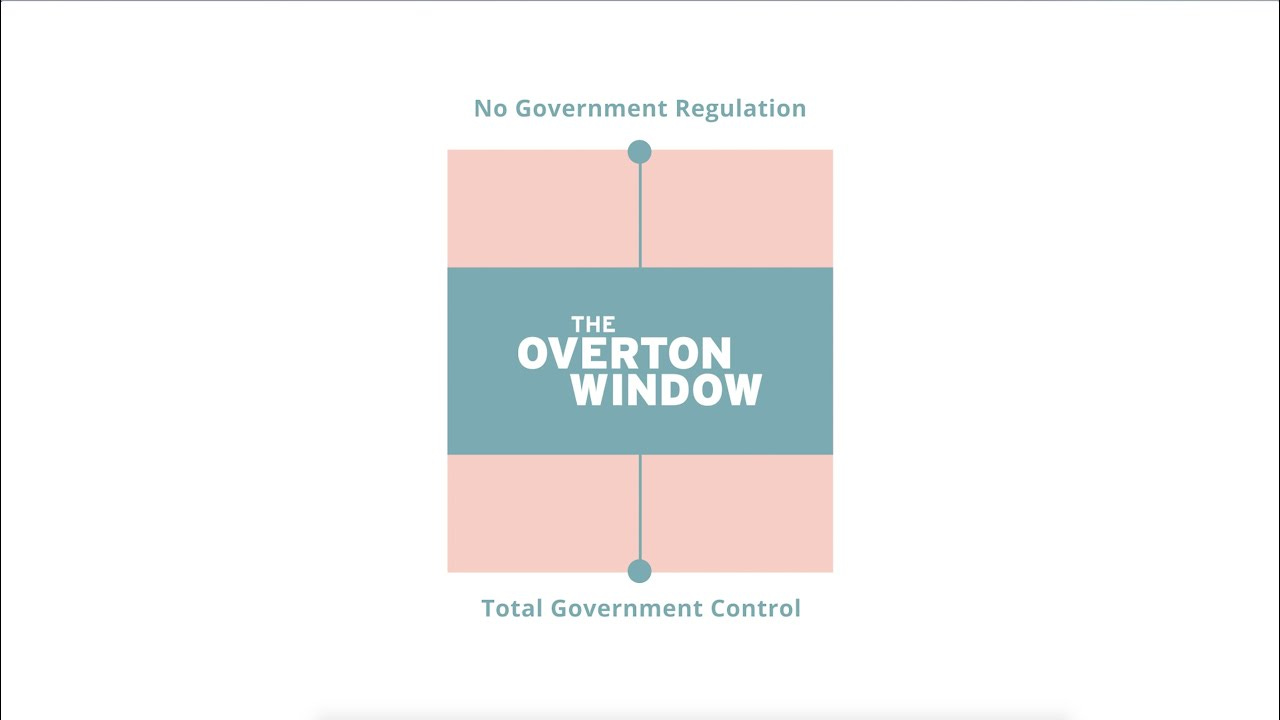The Overton Window: Shifting the Boundaries of Political Discourse
How Ideas Move from Radical to Mainstream
Image from Mackinac Center
In the ever-evolving landscape of political discourse, the Overton window serves as a crucial lens through which we can understand the fluid boundaries of public acceptability. Named after the late Joseph P. Overton, a former vice president of the Mackinac Center for Public Policy, the Overton window encapsulates the range of policies and ideas that the public, at any given time, finds acceptable or mainstream. This spectrum is not fixed; it shifts in response to cultural dynamics, political advocacy, and social movements, revealing the malleable nature of what we deem possible or appropriate in the realm of policy-making.
The Mechanics of the Overton Window
At its core, the Overton window is a spectrum of political ideas, ranging from those perceived as unthinkable to those considered policy. The categories typically include:
Unthinkable: Ideas that are far outside the bounds of acceptable discourse.
Radical: Ideas that are extreme but have some degree of consideration.
Acceptable: Ideas that are within the mainstream but not yet policy.
Sensible: Ideas that are widely recognized as reasonable and practical.
Popular: Ideas that enjoy broad public support.
Policy: Ideas that are currently being implemented or are viable for legislative action.
Movements within the window occur due to a variety of influences, such as shifts in public opinion, media framing, political leadership, and social advocacy. When a previously unthinkable idea becomes part of mainstream dialogue, it demonstrates a shift in the Overton window.
Historical Shifts in the Overton Window
The history of political and social change is replete with examples of the Overton window in action. Consider the civil rights movement of the 1960s. At one time, the idea of desegregation and equal rights for African Americans was considered radical and, by some, unthinkable. Through persistent advocacy, shifting public sentiments, and strategic political action, these ideas moved through the spectrum to become accepted, popular and eventually codified into law.
Similarly, contemporary debates about climate change demonstrate how the Overton window can shift rapidly. Twenty years ago, mainstream discourse rarely included the idea of a Green New Deal or comprehensive climate action. Today, these proposals are not only part of the mainstream conversation but also enjoy significant support, illustrating how advocacy and changing public awareness can transform political feasibility.
The Role of Influencers and Advocacy
Influencers, including politicians, activists, and media personalities, play a pivotal role in shifting the Overton window. They employ various strategies to alter public perception and move ideas along the spectrum. One common method is "framing," where issues are presented in a way that highlights certain aspects while downplaying others. For instance, framing climate change as a matter of national security rather than just an environmental concern can broaden its appeal and urgency.
Activism also serves as a powerful tool for shifting the Overton window. Grassroots movements, protests, and campaigns draw public attention to issues and can accelerate the acceptance of new ideas. The LGBTQ+ rights movement is a prime example. Decades of advocacy, combined with changing social attitudes, have moved issues like same-sex marriage from unthinkable to policy in many parts of the world.
The Dynamic Nature of the Overton Window
Understanding the Overton window requires acknowledging its dynamic nature. It is not a static frame but a reflection of society's evolving values and beliefs. As such, political leaders and advocates must continuously engage with the public to either defend the current boundaries or push for expansion.
In today's hyperconnected world, the Overton window can shift more rapidly than ever before. Social media, instant communication, and global networks mean that ideas can spread quickly, gaining traction and support in a matter of days or weeks. This acceleration underscores the importance of remaining attuned to the currents of public opinion and the mechanisms of influence.
In conclusion, the Overton window provides a valuable framework for understanding the shifting tides of political and social acceptability. It highlights the importance of advocacy, public engagement, and strategic communication in shaping the realm of the possible. As we navigate the complexities of modern politics, recognizing the fluid boundaries of the Overton window reminds us that change is always within reach, driven by the collective efforts of individuals and movements striving to redefine what is acceptable and achievable.
As always, feel free to reach out with any questions or comments. Happy musing!




